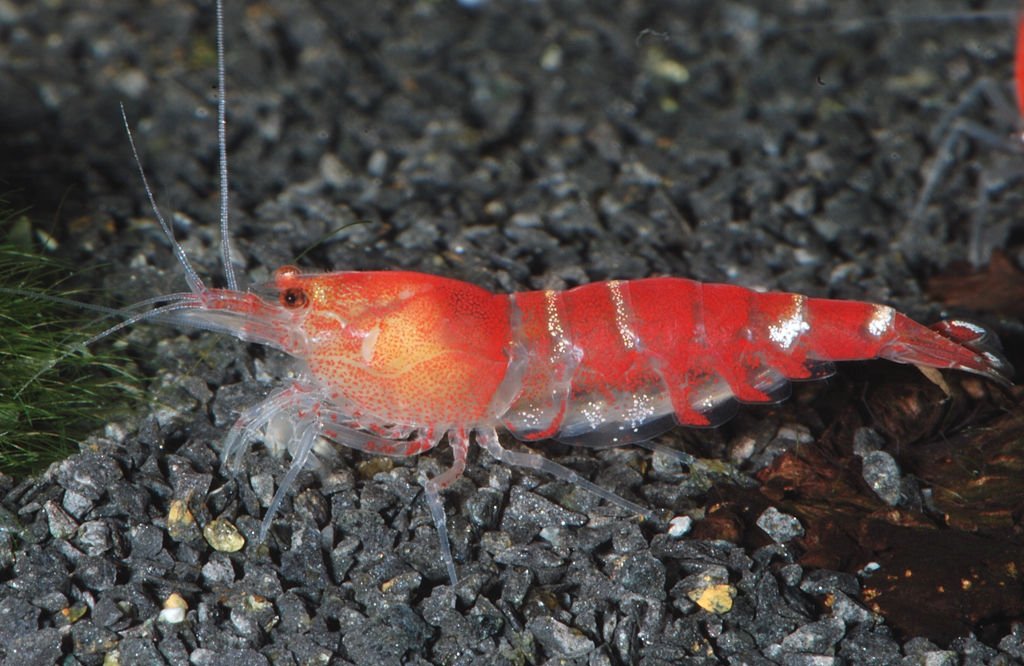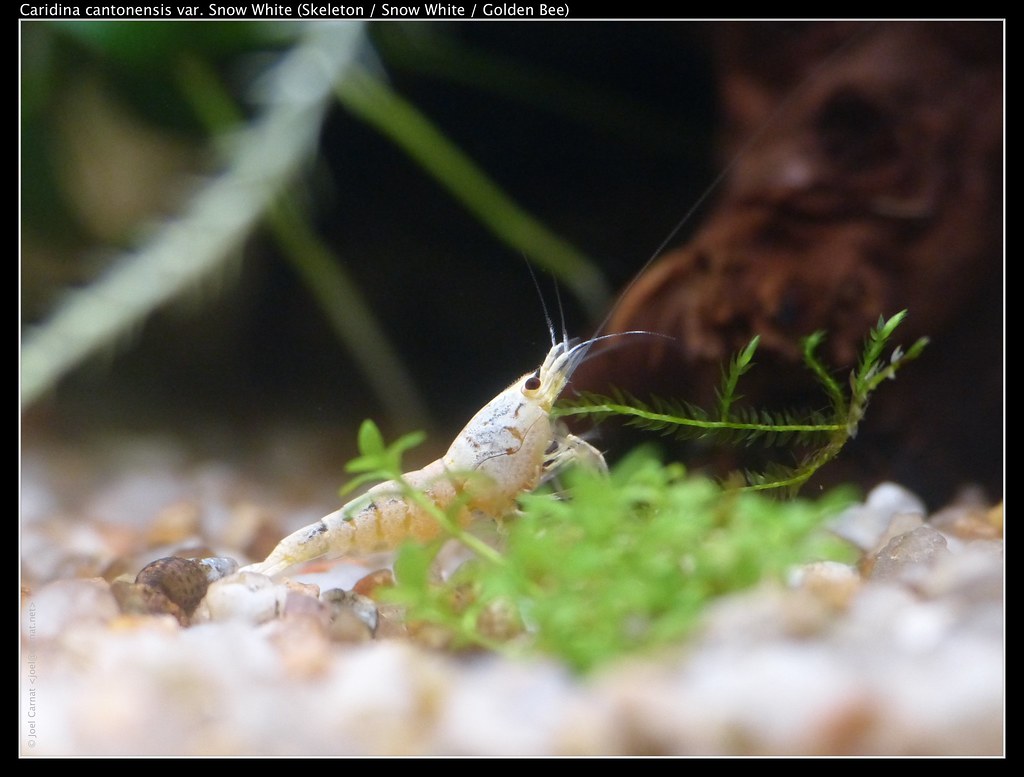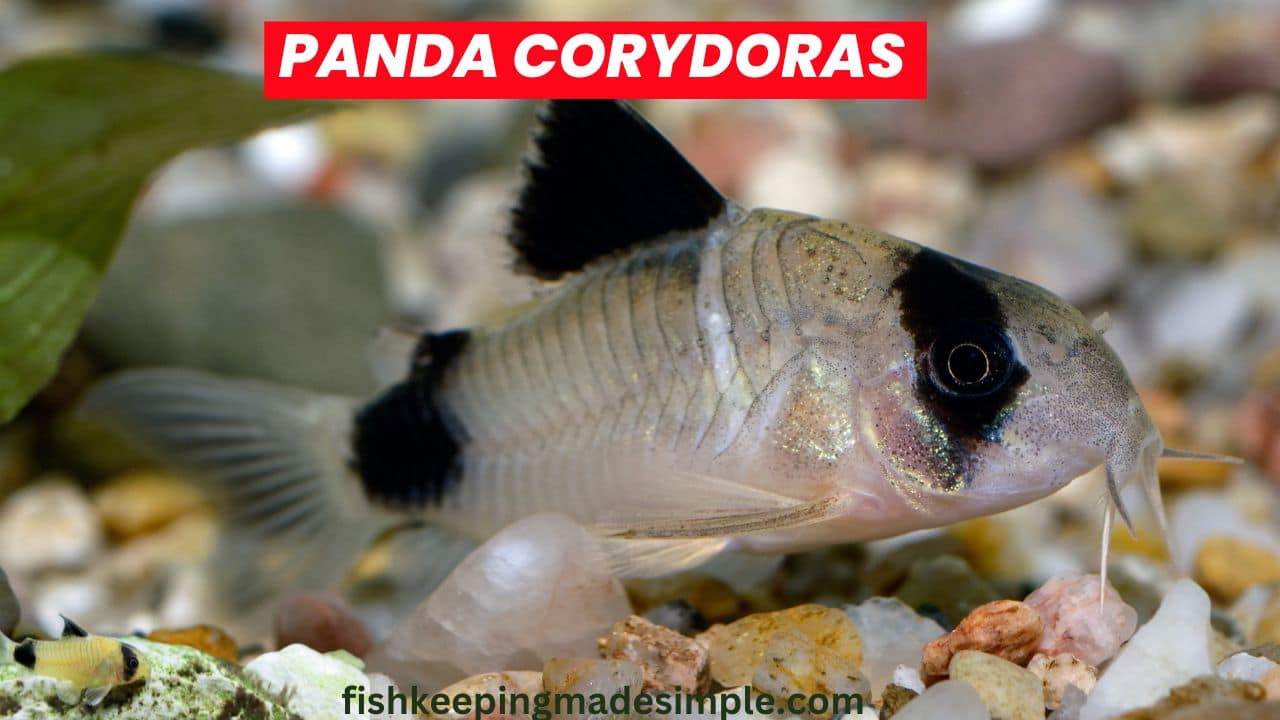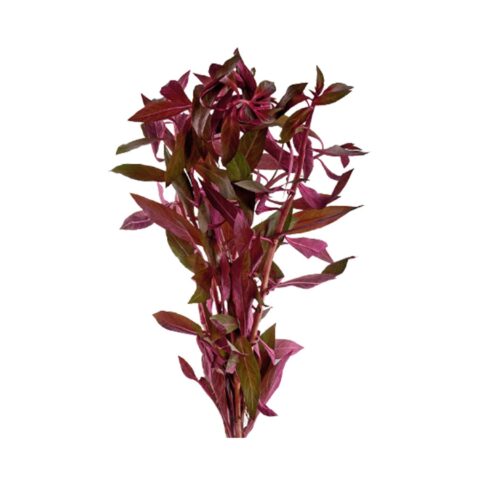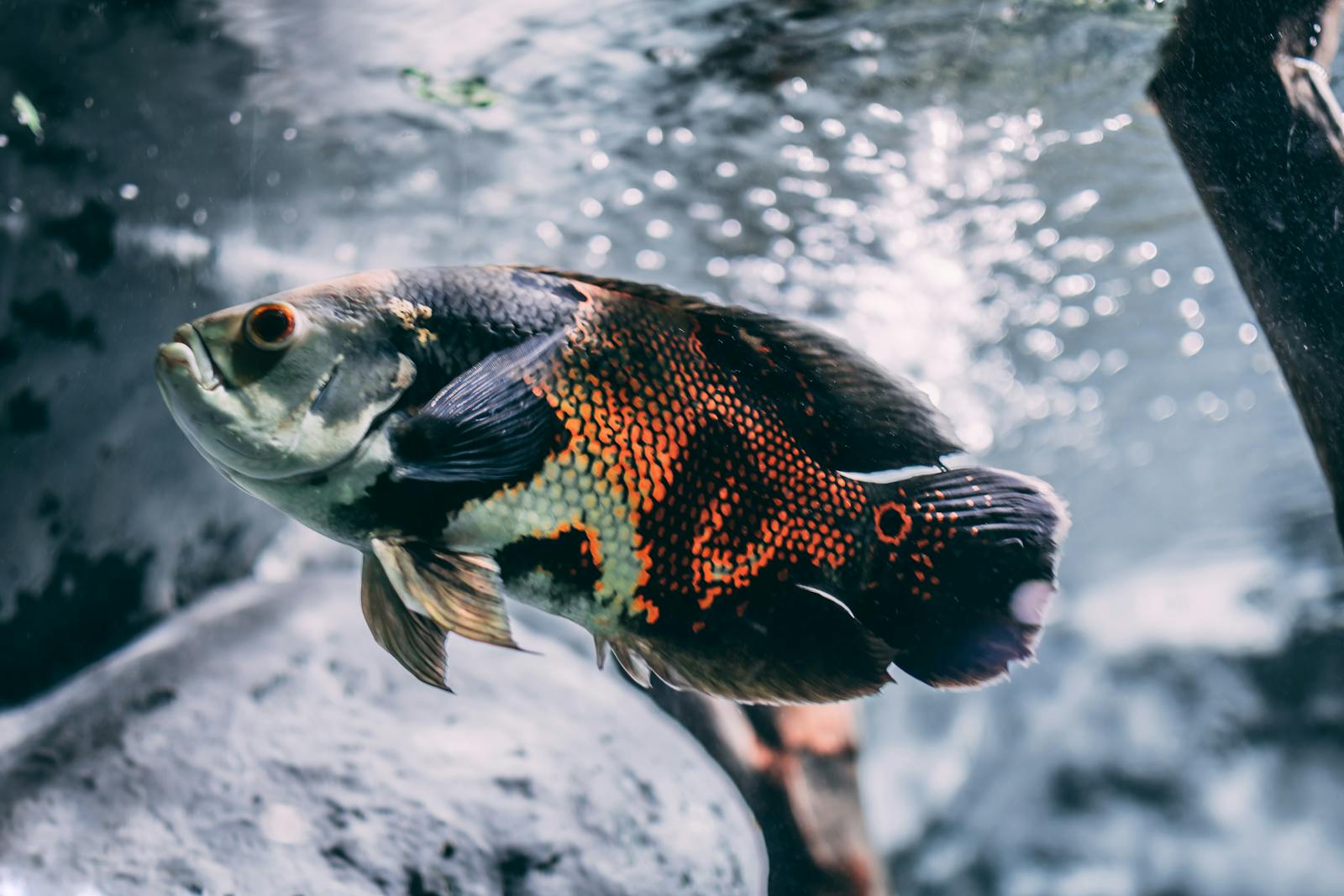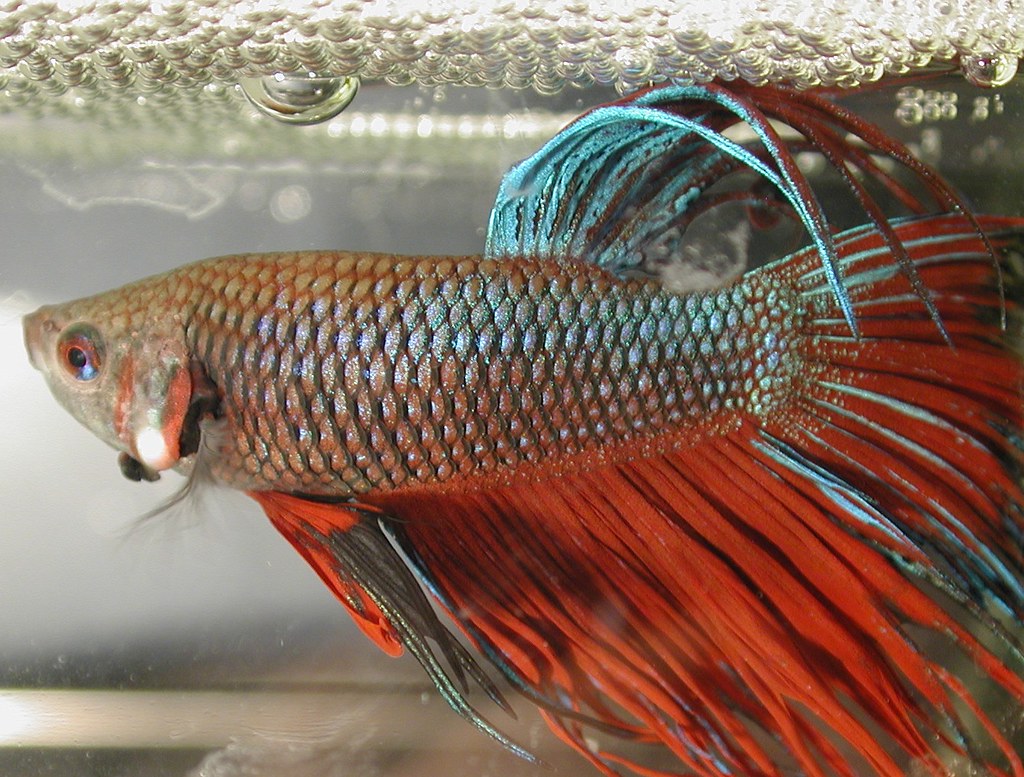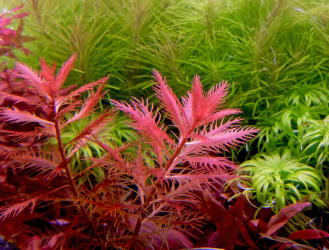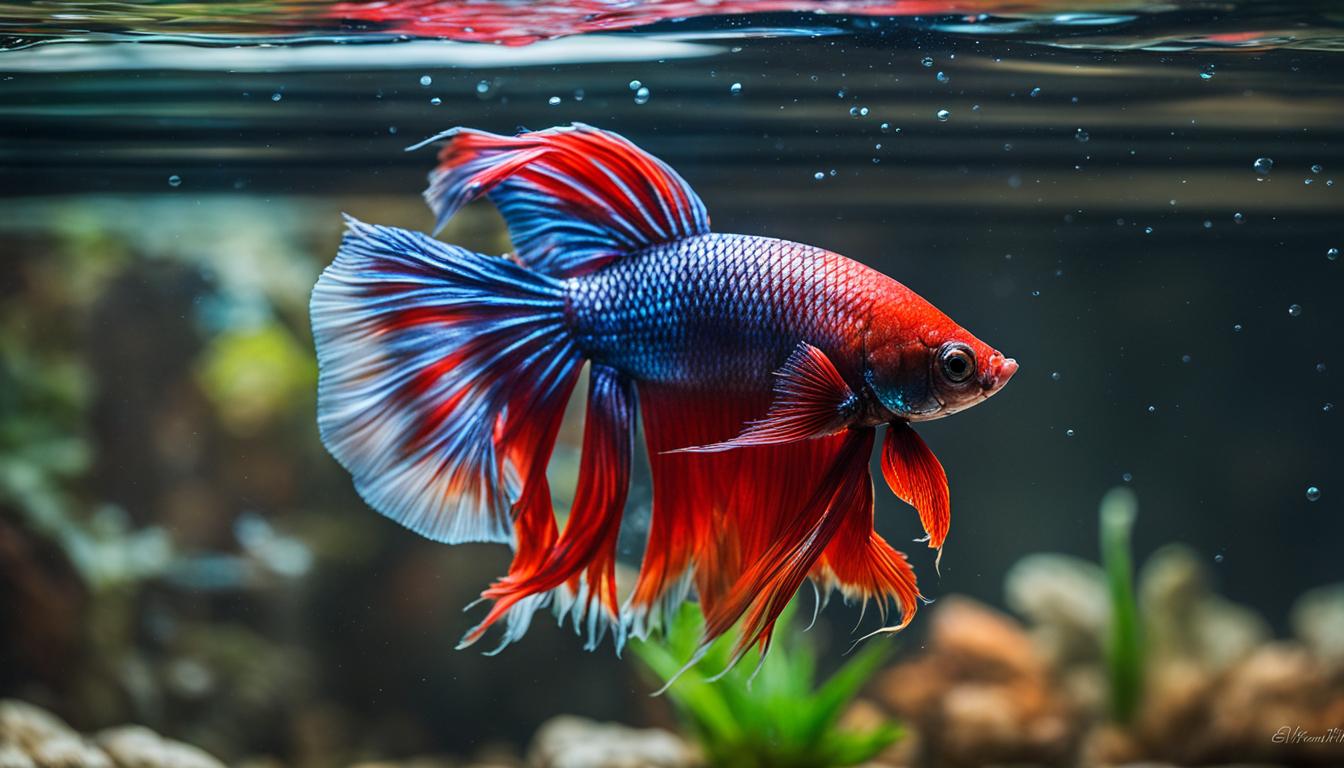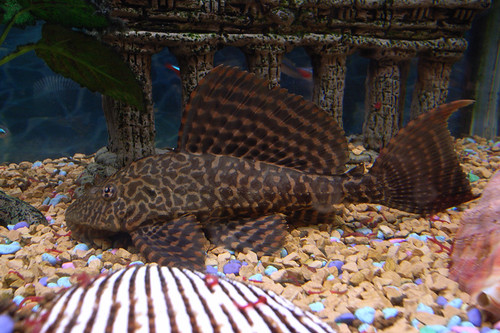Common Mistakes with Caridina Shrimp: Did you know that sudden changes in water or temperature can stress and harm shrimp? Many people love the colors and behaviors of Caridina shrimp. But, they need special care to thrive. Even beginners can make mistakes that harm their shrimp.
Common mistakes include wrong water parameters, overfeeding, molting issues, and bad tank setup. Knowing their needs and proper care can help your shrimp thrive. This article will cover these mistakes and offer tips for better care.
We’ll talk about avoiding mistakes in water parameters, feeding, disease prevention, and more. This guide is for both new and experienced shrimp keepers. It aims to help you enjoy the journey of breeding and caring for these amazing creatures.
Table of Contents
Key Takeaways
- Caridina shrimp need soft, acidic water and a low pH.
- High temperatures and sudden water changes harm their health.
- Too much food and waste can poison the substrate.
- A good tank setup, with proper filtration and hiding spots, is key.
- Regular water changes and monitoring are vital for a healthy shrimp colony.
Incorrect Water Parameters
Many beginners make a common mistake when keeping Caridina shrimp. They don’t research the water parameters each species needs. Caridina shrimp like soft, acidic water with a low pH. But Neocaridina shrimp prefer harder water with a higher pH. It’s key to match your tank’s water to your shrimp’s needs to keep them alive.
Researching Specific Water Parameters for Different Shrimp Species
Before setting up a shrimp tank, learn what water parameters your shrimp need. Caridina shrimp like soft, acidic water. They breed best in pH 6.8-7.5, GH 4-6, and lower KH. Neocaridina shrimp can handle a wider pH range, 6.5-8.0, GH 6-8, and KH 2-5.
| Parameter | Caridina Shrimp | Neocaridina Shrimp |
|---|---|---|
| pH | 6.8-7.5 | 6.5-8.0 |
| GH | 4-6 | 6-8 |
| KH | 0-2 | 2-5 |
| Temperature (°C) | 20-22 | 20-29 |
Caridina Shrimp Prefer Soft, Acidic Water with Low pH
Caridina shrimp, like Crystal Red Shrimp and Crystal Black Shrimp, need specific water. They like soft, acidic water with a pH of 6.8 to 7.5. Harder water can stress them, cause molting issues, and even kill them. Keeping the water stable is crucial for their health.
Ensuring Tank Water Parameters Match Shrimp Needs
To match your tank’s water to your shrimp’s needs, test the water regularly. Check pH, water hardness (GH and KH), and temperature. Use products or RO water if needed. Slow changes are better than sudden ones for your shrimp’s health.
High Temperatures
Keeping Caridina shrimp healthy is all about the right temperature. These shrimp are very sensitive to high temperatures. High temperatures can stress them out and even kill them.
Caridina Shrimp Vulnerability to Elevated Temperatures
Caridina shrimp, like Crystal Red and Crystal Black Shrimp, come from cool Asian streams. They do best in cooler water than many other shrimp. High temperatures can make them less active, hungry, and weak, making them sick easier.
Ideal Temperature Range for Caridina Shrimp
For Caridina shrimp to be happy, their tank needs the right temperature. Most need a range of 20°C to 24°C (68°F to 75°F). Some, like Taiwan Bee Shrimp, like it a bit cooler, around 18°C to 22°C (64°F to 72°F).
Some shrimp, like Caridina Simoni Simoni, can handle a bit warmer water for a short time. But, staying above 28°C (82°F) for too long is bad for their health.
| Shrimp Species | Ideal Temperature Range | Maximum Temperature Tolerance |
|---|---|---|
| Crystal Red Shrimp (CRS) | 20°C – 24°C (68°F – 75°F) | 28°C (82°F) |
| Crystal Black Shrimp (CBS) | 20°C – 24°C (68°F – 75°F) | 28°C (82°F) |
| Taiwan Bee Shrimp | 18°C – 22°C (64°F – 72°F) | 26°C (79°F) |
| Caridina Simoni Simoni | 24°C – 30°C (75°F – 86°F) | 34°C (93°F) |
Monitoring Tank Temperature and Maintaining Suitable Range
Keeping the right temperature for your shrimp is key. Use a thermometer to check the water often. If your room is too warm, get an aquarium chiller. Or use fans to cool the tank.
Staying consistent with temperature is important. Sudden changes can harm your shrimp as much as constant high temperatures. By keeping the temperature right, you make a great home for your shrimp.
Rapid Changes in Water Parameters
Many shrimp keepers make a big mistake by changing water too fast. Shrimp are very sensitive and sudden changes can stress them out. This stress can lead to health problems and even death. It’s important to keep the water stable and change it slowly to keep your shrimp healthy.
Shrimp Sensitivity to Sudden Fluctuations in Water Parameters or Temperature
Shrimp are much more sensitive to changes than fish. When the water or temperature changes quickly, shrimp get stressed. This stress can cause them to act strangely and even get sick.
In a forum with over 8K views, shrimp keepers talked about water changes. They shared how changing the water too much can harm their shrimp. Some even reported shrimp getting sucked into filters during water changes.
Performing Water Changes Slowly and Allowing Acclimation
To reduce stress, change the water slowly and let the shrimp adjust. Drip acclimation is a good way to do this. It involves adding new water slowly, so the shrimp can get used to it.
When changing the water, make sure the new water is the same as the tank’s. This means keeping the pH, temperature, and hardness the same. Some keepers use AquaSafe water to make sure it’s safe and balanced.
Maintaining Stable Water Conditions to Reduce Stress
To keep your shrimp healthy, keep the water stable. Check the water parameters often and make small changes as needed. Shrimp like a stable environment, so consistency is key.
Remember, different shrimp need different water conditions. Caridina shrimp like soft, acidic water, while Neocaridina shrimp prefer harder water. Knowing what your shrimp need is important for their health.
| Shrimp Species | Ideal Water Parameters |
|---|---|
| Caridina | Soft, acidic water with low pH |
| Neocaridina | Harder water with higher pH |
By keeping the water stable and changing it slowly, you can reduce stress on your shrimp. This helps them stay healthy and live longer. A stable environment is essential for successful shrimp keeping.
Toxic Substrate
Many people overlook the danger of toxic substances in the substrate of Caridina shrimp tanks. Over time, uneaten food and shrimp waste can make the substrate poisonous. This is a common reason for shrimp deaths, as seen in many online discussions.
Accumulation of Organic Matter, Uneaten Food, and Shrimp Waste in Substrate
Shrimp are very sensitive to their environment. The buildup of organic matter in the substrate can be harmful. In a popular online thread, over 10,000 people discussed how toxic substrates can harm shrimp.
Many shared their experiences and tank details. The thread had 15 replies, with 12 people actively participating.
| Parameter | Reported Value |
|---|---|
| pH | 7.8 |
| Total Dissolved Solids (TDS) | Over 450 |
| General Hardness (GH) | 12 |
| Carbonate Hardness (KH) | 10 |
Toxins in Substrate Poisoning Shrimp
As organic matter decomposes, it releases toxins into the water. These toxins can slowly poison your shrimp. Even if the water looks fine, these toxins can still harm your shrimp.
Keeping the substrate clean is key to your shrimp’s health. Preventing waste buildup is essential.
Avoiding Excessive Substrate Disturbance and Using Feeding Dishes
To avoid toxic substrate, don’t disturb the substrate too much. Stirring it up can release harmful toxins into the water. This can harm your shrimp.
Using feeding dishes can also help. It keeps uneaten food from reaching the substrate. This reduces the chance of toxic buildup. Simple steps like these can keep your shrimp healthy and prevent unnecessary deaths.
Bacterial Infections
Bacterial infections are a big threat to shrimp colonies. They can spread fast and kill many shrimp in just weeks. Shrimp diseases, especially those from Vibrio spp., are major killers. These germs harm shrimp when their defenses are down due to bad water, poor food, pollutants, and stress.
Symptoms of Bacterial Infections in Shrimp
It’s important to spot bacterial infections in shrimp early. This helps stop the disease from spreading. Look out for:
- Weakened and lethargic shrimp
- Reduced feeding activity
- Increased mortality rate
- Discoloration or spots on the shrimp’s body
- Erratic swimming behavior
Quarantine as a Course of Action for Suspected Infections
If you think your shrimp have an infection, quarantine them right away. But remember, quarantine might not cure the infection. The disease could have spread to other shrimp before you see symptoms.
Maintaining Strict Hygiene and Sterilizing New Decorations or Plants
Preventing infections is better than treating them. Keep your tank clean to avoid bringing in harmful germs. Always wash your hands before touching your tank. Don’t mix things between tanks.
When adding new stuff to your tank, sterilize it first. Soak it in a disinfectant like diluted bleach, then rinse well with clean water.
| Factor | Impact on Bacterial Infections |
|---|---|
| High stocking densities | Increases the risk of disease outbreaks |
| Improper handling of shrimp | Stresses shrimp and weakens their defenses |
| Harmful water parameters | Creates favorable conditions for pathogenic bacteria |
| Toxic chemicals | Weakens shrimp’s immune system |
| Poor shrimp condition | Makes shrimp more susceptible to infections |
Knowing what causes bacterial infections in shrimp helps you keep your colony healthy. Good hygiene and quarantine can greatly lower disease risks.
Choosing the Right Shrimp Species
Choosing the right shrimp species is key for a great shrimp-keeping experience. For beginners, Neocaridina shrimp, like dwarf cherry shrimp, are a great choice. They are easy to care for and breed, making them perfect for new aquarists. These shrimp come in many colors, including red, blue, black, and green.
Caridina shrimp need specific water conditions, unlike Neocaridina shrimp. They prefer softer, more acidic water. If you’re new, start with Neocaridina shrimp before moving to Caridina.
It’s important to know the water needs of your chosen shrimp species. Neocaridina shrimp like temperatures between 70-76°F. They prefer soft, acidic water with a pH of 6.8-7.5 and lower KH. Keep the water stable and change it at least 30% each week to keep your shrimp healthy.
| Shrimp Species | Ideal Tank Size | Recommended Shrimp per Gallon | Water Parameters |
|---|---|---|---|
| Neocaridina Shrimp | Minimum 5 gallons | Maximum 10 shrimp per gallon | pH 6.7-8.0, KH 3-10, GH 6-10, Temp 65-80°F |
| Ghost Shrimp | Minimum 5 gallons | Maximum 3-4 shrimp per gallon | pH 6-8, KH 2-10, GH 6-14, Temp 65-82°F |
Neocaridina shrimp breed well under the right conditions. For breeding, keep them in a 20-gallon tank with 10-15 shrimp per five gallons. They do best in groups of at least ten to avoid hiding and promote breeding.
In summary, start with Neocaridina shrimp, like dwarf cherry shrimp, if you’re new. Learn their water needs and keep their environment stable for successful breeding. As you gain experience, you can explore Caridina shrimp species and grow your collection.
Common Mistakes with Caridina Shrimp
Keeping Caridina shrimp requires knowing common mistakes that can harm them. These sensitive creatures need special care to thrive in a home aquarium.
Overlooking Water Parameter Requirements
Many shrimp keepers forget the water needs of Caridina shrimp. These shrimp are very sensitive to water conditions. It’s key to keep the water stable within their best ranges:
| Parameter | Optimal Range |
|---|---|
| Temperature | Below 74°F (~ 23°C) |
| pH | 6.0 – 6.8 |
| GH | 3-6 dGH |
| KH | 0-1 dKH |
| TDS | 80 – 150 ppm |
| Ammonia & Nitrite | 0 ppm |
| Nitrate | Below 10 ppm |
Overfeeding and Excessive Organic Waste
Overfeeding shrimp is a big mistake. It causes uneaten food to rot, harming the water quality. Shrimp eat little, so feed them high-quality foods in small amounts. Too much waste from overfeeding can poison the tank.
Inadequate Filtration and Tank Maintenance
Not having good filtration and not cleaning the tank often can harm shrimp. Use a top-notch filter for your tank size. Also, change 10% to 25% of the water weekly. Ignoring these steps can make the water bad and stress the shrimp.
By knowing these mistakes and avoiding them, shrimp keepers can make a great home for their pets. Watch the water, feed right, and keep the tank clean. These steps are crucial for the health and happiness of these amazing creatures.
Creating a Suitable Habitat
Creating the right habitat is key for Caridina shrimp’s health. These shrimp love environments similar to their natural habitats in Asia, especially China and Taiwan. They live in soft, acidic, cool waters of streams and rivers.
Providing Hiding Spots and Vegetation
It’s important to give Caridina shrimp lots of hiding spots and plants. They feel safe with places to hide, like caves and dense plants. Good plants for their tank include:
- Java Moss
- Christmas Moss
- Dwarf Hairgrass
- Anubias Nana
- Bucephalandra
These plants help shrimp hide and keep the water stable. They soak up extra nutrients and help bacteria grow.
Maintaining Stable Water Parameters
Caridina shrimp need steady water conditions. Here are the best water settings for them:
| Parameter | Recommended Range |
|---|---|
| Temperature | Below 74°F (~ 23°C) |
| pH | 6.0 – 6.8 |
| GH | 3-6 dGH |
| KH | 0-1 dKH |
| TDS | 80 – 150 ppm |
| Ammonia and Nitrite | 0 ppm |
| Nitrate | Below 10 ppm |
For stable water, change 10% to 25% of the tank water weekly. A 10-gallon tank is the minimum size. Use test kits to check the water often.
With the right habitat, hiding spots, plants, and water, your Caridina shrimp will thrive. They’ll show off their natural behaviors.
Conclusion
Reflecting on my journey with Caridina shrimp care, I’ve learned a lot. Understanding their water needs, temperature, and habitat is key. This knowledge helps me create a great home for my shrimp.
It’s important to know the specific needs of your shrimp. Different species have different water hardness, pH, and temperature needs. This knowledge is crucial for their health.
I’ve also learned to avoid common mistakes. Quick water changes, toxic substrates, and poor tank care can harm shrimp. A consistent care routine helps my shrimp thrive and even reproduce.
Watching my shrimp grow and seeing their vibrant colors is rewarding. It’s amazing to see their fascinating behaviors.
If you’re thinking about keeping Caridina shrimp, do your research. Learn about their needs and create a suitable habitat. With dedication and patience, you can enjoy a thriving shrimp colony.
Success in shrimp keeping comes from providing the best conditions. By doing so, you’ll have a captivating display of nature in your home.
FAQ
What are the ideal water parameters for Caridina shrimp?
What is the ideal temperature range for Caridina shrimp?
How can I prevent toxic substrate from harming my Caridina shrimp?
What are the symptoms of bacterial infections in Caridina shrimp?
Which Caridina shrimp species are best for beginners?
What are some common mistakes to avoid when keeping Caridina shrimp?
How can I create a suitable habitat for my Caridina shrimp?
Reference
| International Body | Website |
| American Aquarium Association | https://www.americanaquariumproducts.com/ |
| Aquatic Plant Society | https://www.aquaticplantsociety.org/ |
| Aquatic Veterinarians | https://www.aquavetmed.info/ |
| International Aquatic Plants Society | https://www.iapso-online.com/ |
| International Shrimp Competitions | https://www.shrimpspot.com/ |
| Shrimp and Freshwater Invertebrates | https://www.shrimpspot.com/forums/freshwater-invertebrates.37/ |
I am a passionate aquarist with over 30 years of hands-on experience in fishkeeping. My journey began at a young age, collecting fish from the wild and learning through experimentation. Specializing in tropical fish, I bring a deep understanding of the hobby to FishKeepingMadeSimple. The site provides honest, detailed reviews of essential products and accessories to help fellow enthusiasts create the best environments for their fish.


